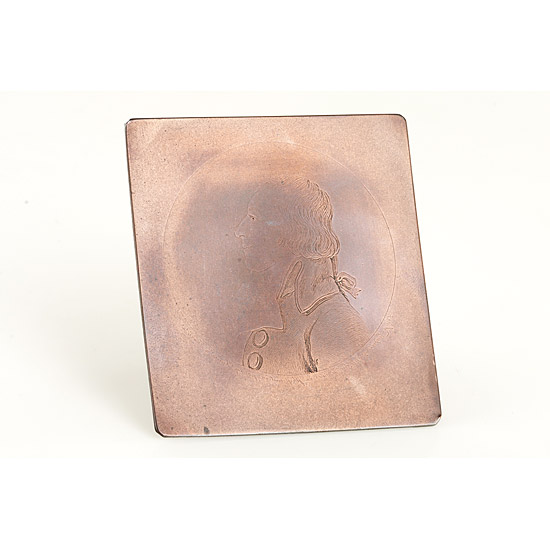
Physionotrace Copper Printing-Plate
914
Unsold
This item is subject to margin scheme taxation and the premium is 24% if it remains in the EU
Estimate € 2.400 – 3.000
Manufacture Year : c.1790
Physionotrace copper printing-plate in excellent condition depicting an unknown gentleman, inscribed under the circular image: ‘Dess. p. Fouguet Gr. p. Chretien inv. du physionotrace Passage S. Honoré a Paris’. The Physionotrace apparatus, invented by Gilles-Louis Chrétien in 1786 was a mechanical wooden instrument with a viewfinder. It worked as a pantograph device and reduced the artist's drawing to a smaller size and immediately engraved it in copper. This method enabled the pantograph to produce copperplates that could be printed again and again. The plates can be seen as a forerunner of the photographic negative since the basic purpose was the same: a cheaper method to produce a quantity of life-like images in a short time. In Paris, at the height of the "Daguerreotypomanie" in 1847, the most successful photographers produced up to three thousand portraits annually, while there were only two studios in Paris between 1786 and c. 1810 which produced a relatively small number of Physionotrace engravings. Consequently very few of these intriguing portraits are preserved today – the printing-plates beeing even more scarce than the prints!



